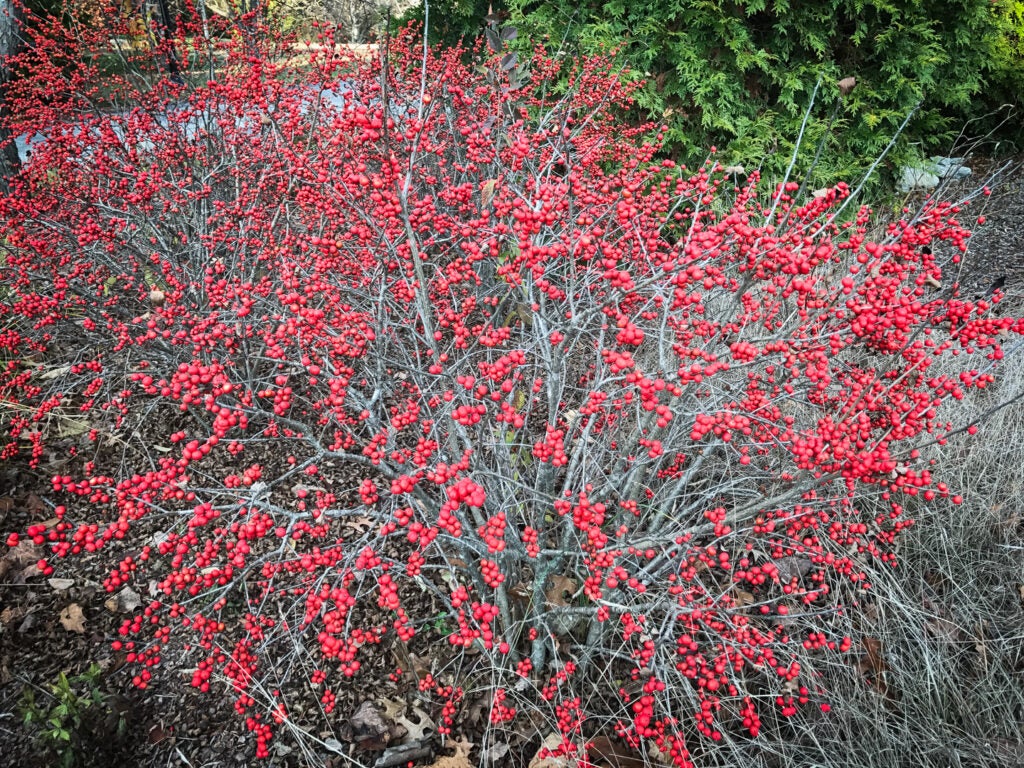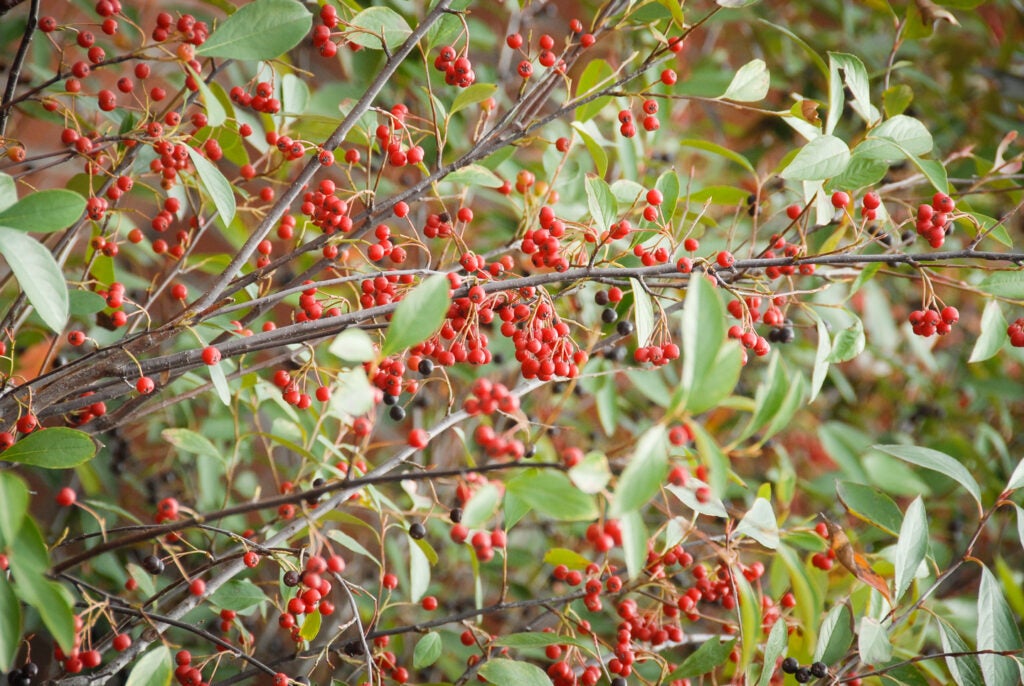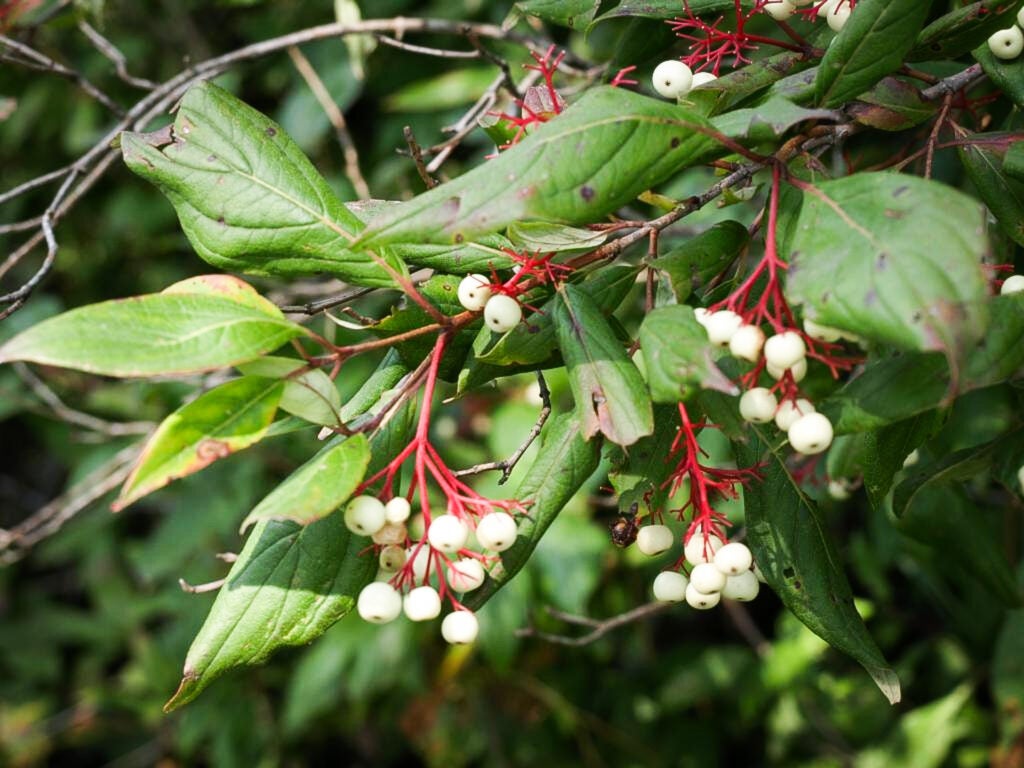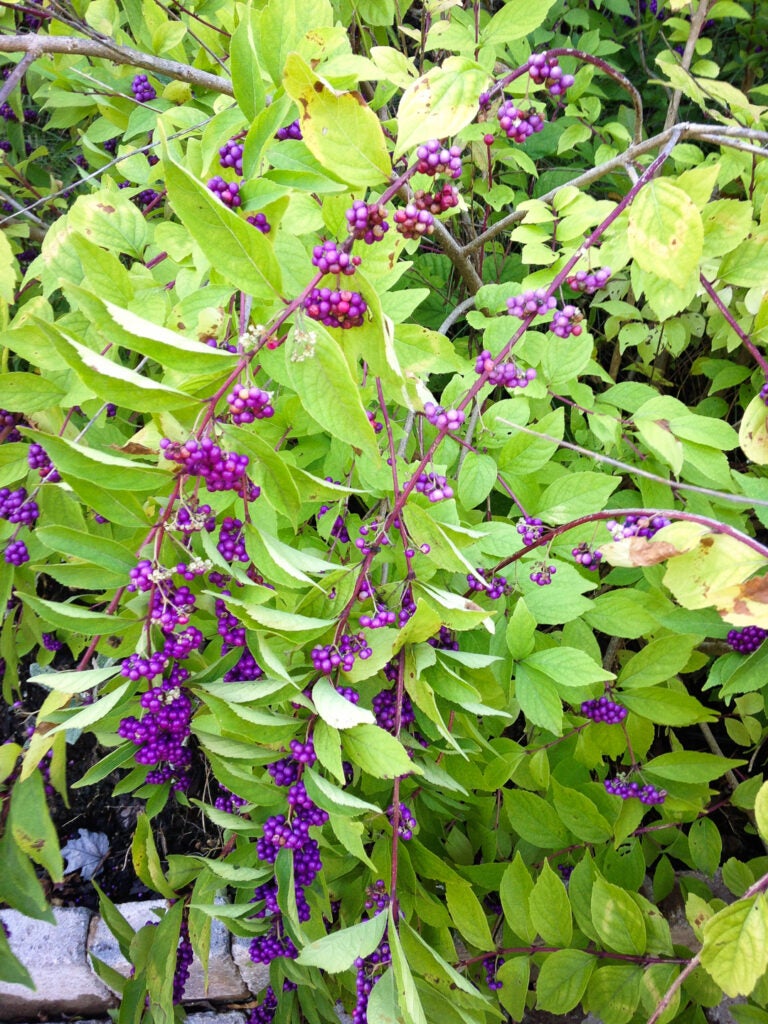We think of spring and summer as the colorful days of gardening, but let’s give a nod to the variety of berries our native plants produce in fall and winter too.
In addition to winter interest for human eyes, these plants are important for our year-round and migratory birds. Birds that remain in our area year-round have adapted to seasonal changes and the impact they have on available food sources.
Northern Cardinals for example, will eat berries in fall and winter, then switch to insects in spring and summer. Not only is this change in diet necessary for birds to survive, but it may also provide a necessary signal that the breeding season is approaching. In addition to our year-round inhabitants, October brings dark-eyed juncos, white-throated sparrows and others, which consume berries in the winter.
Providing fat needed to survive the winter, fall berries are considered one of the most beneficial foods consumed by birds. So, this fall and winter when you plan to provide food for your bird visitors via seeds and nuts, consider introducing some native berry producing plants to your landscape. Not only will you be adding color for your own enjoyment, you will also be broadening the menu for your avian guests.

Winterberry Holly
The name may have tipped you off that Winterberry (Ilex verticillate) holds berries through winter. The red berries are beautiful against the snow or as a colorful addition to holiday greenery, but they also are a significant source of nutrients for birds. Their berries persist later in winter than most others.
Keep in mind that male and female plants are necessary for berry production and only female plants produce berries (generally one male per several females). Winterberry attracts cedar waxwings, robins and other birds. It also is a host plant for Henry’s Elfin butterfly.
Spicebush
Red berries produced by the Spicebush (Lindera benzoin) typically persist through September. They are 33% fat, providing good fuel for birds in the fall. Spicebush attracts robins, bluebirds, thrushes and others. In addition to supporting our avian friends, Spicebush is a host plant for Spicebush Swallowtail butterflies.
Coralberry
The Coralberry (Symphoricarpos orbiculatus) produces pink berries in fall that generally persist through winter and are enjoyed by most songbirds. Coralberry attracts waxwings, cardinals, finches, thrushes and others. In spring and summer, its foliage is enjoyed by hummingbird moths, and its flowers are used by pollinating insects, such as wasps and flies. In addition, the plant is tolerant of a wide range of soils — even Kentucky’s clay.

Chokeberry
Red and black chokeberries (Aronia arbutifolia and Aronia melanocarpa) produce blueberry-sized berries in the fall. Luckily for wintering birds, Chokeberry fruit loses its bitterness after freezing and thawing. Chokeberry attracts robins, woodpeckers, bluebirds and thrushes. The plant is tolerant of a wide variety of environments and also is host to a number of moth species, as well as hairstreak butterflies.
Juniper
Junipers (Juniperus virginiana) provide excellent shelter. In addition, female junipers produce bluish berry-like cones that birds enjoy in the winter. The “berries” are favored by cedar waxwings. The dense branching and evergreen canopy creates an ideal nesting spot for birds too. In addition, the plant tolerates dry soil and is unfavored by deer.
Blackhaw Viburnum
From its beautiful white flowers in spring to its pinkish berries that mature to blue-black in fall, Blackhaw Viburnum (Viburnum prunifolium) is a feast for human eyes, as well as a tasty fall and winter staple for birds. Blackhaw Viburnum attracts cardinals, bluebirds, robins and cedar waxwings. In addition, it is a host plant for the Azure butterfly.
Northern Bayberry
The Northern bayberry (Morella pensylvanica) carries the bacon double cheeseburger of berries, coming in at 50% fat! In addition, the stiff dense branching of the plant provides shelter and nesting opportunities. It attracts chickadees, woodpeckers, swallows, bluebirds and warblers. The berries are greyish-white in color. The plant requires male to female pollination to produce fruit.

Gray Dogwood
The distinctive white berries of the Grey dogwood (Cornus racemose) are emphasized by their red stems in winter. More importantly for the birds, those berries are 40% fat, making them ideal as a fall and winter food source. In spring and summer, the flowers attract a number of pollinators including the Azure butterfly, which lays her eggs on the plant. A number of moth species also use the plant for food. Grey dogwood attracts Bobwhites, woodpeckers and cardinals.

American Beautyberry
The purple berries on the American Beautyberry (Callicarpa americana) are by far unique. Pink blooms form in the spring, followed by the even showier berries in late summer to early fall. The berries attract a variety of birds including robins, cardinals, mockingbirds, and Baltimore orioles. It also is a host plant for the rustic sphinx moth.
Southern Crabapple
The yellowish green apples produced in the fall by the Southern Crabapple (Malus angustifolia) are just small enough to be appealing to birds, but large enough to also be enjoyed by squirrels and rabbits. In the spring, this tree is an early bloomer, which is especially beneficial to native bees. Southern Crabapple attracts bluebirds, robins, thrushes and cardinals.
American Holly
Perhaps the most recognizable berry-producing native, the American Holly (Ilex opaca) produces a berry that is red, or on occasion, orange or yellow. American Holly attracts robins, bluebirds and thrushes. The American Holly attracts butterflies and is a larval host to the Henry’s Elfin butterfly.
You may ask, “Why native? Does it matter?” Come to find out, yes it does. Research indicates that fruits produced by invasive plants contain less than 1% fat, while fruits from native plants provide a fat content of 7-50%. Keep in mind that fat content is necessary for winter survival.
Calorie content, on the other hand, is especially important for migration — birds require sustained energy to complete their journey and successfully breed. The same study measured energy within native and non-native berries, revealing that berries from native plants are also higher in calories than non-native plants.
In other words, native is the way to go! The next time you observe a bird dining on a berry from a native plant, you can rest assured they are choosing the most beneficial item on the menu.
Sources for this article include, https://www.loveyourlandscape.org/expert-advice/landscaping-essentials/trending-now/support-winter-wildlife-with-these-6-berry-producing-plants/; https://content.yardmap.org/learn/winter-berries/; https://bioone.org/journals/the-condor/volume-115/issue-2/cond.2013.120023/A-Physiological-Assessment-of-Seasonal-Differences-in-Spring-and-Autumn/10.1525/cond.2013.120023.full; https://www.audubon.org/magazine/january-february-2013/turn-your-yard-winter-refueling-spot; https://www.researchgate.net/publication/269580502_The_Value_of_Native_and_Invasive_Fruit-Bearing_Shrubs_for_Migrating_Songbirds.










